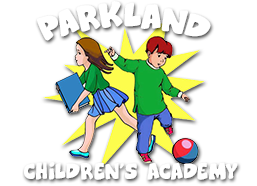
Early brain development is one of the most important responsibilities we have as parents and educators. While there is a large variety of toys, electronics, and apps available on the market to help aid children ranging from infants to pre-k, sensory play and preschool activities are crucial to early brain development.
Here at Parkland Children’s Academy, not only do we understand the importance of sensory play, but we incorporate it into our curriculum in ways that make it enjoyable to the children while also helping them become school ready.
Using sensory play and hands-on development activities shouldn’t stop when school does, though. By incorporating some of these simple activities for infants to pre-k aged children, you can easily continue their education and development at home.
SENSORY PLAY FOR INFANTS:
Sensory Bags: One of the best aspects of sensory bags is that they are fully customizable and all you need is a gallon-sized bag and tape to double seal the opening. These quick and easy bags are beneficial to infants as they help develop hand-eye coordination and build up their attention span. While there are nearly endless ideas available, here are some ideas on what to fill your bag with:
- baby oil, pudding, or paint
- beans, rice, or pasta
- cotton balls, buttons, or beads
- leaves, grass, or sand
- ice, sugar, or flour
Water Trays: Sometimes the most straightforward ideas can be the most engaging. All you have to do with this experience is fill a baking sheet with a little bit of water, add a few toys of different weights, and let the exploration begin! Fun tip: Try changing the temperature of the water. Water activities allow your infant to:
- see the movement of water
- experience how the water feels on different parts of the body
- hear different sounds different objects make in water
SENSORY PLAY FOR TODDLERS:
Rainstick Bottles: As children get older, you can involve them in more of the process instead of just providing them the complete project. This activity not only allows your little to find and touch different textures and objects as the bottle is built but also develop their vision and hearing sense upon completion.
You will need:
- wide-mouthed jar or bottle
- super glue or hot glue
- sticks of various lengths and thickness
- rice
Directions:
- Add sticks and rice to jar or bottle
- Screw and glue on lid
- Enjoy the sound of rain!
Sensory Doughs: Homemade slime and dough have become very popular in the past few years when it comes to children’s crafts. Doughs can be just as fun to make for the adults as it is for the kids! While it may just seem like a quick, fun weekend activity, they are also great for sensory play as they are free to express their creativity while also learning motor skills such as following directions, flexibility, and strength. One easy recipe for DIY cloud dough is:
Ingredients:
- 2 cups flour
- ¼ cup oil (canola, vegetable, or baby)
- food color (optional)
- large bowl
Instructions:
- Add flour to bowl
- Mix oil and food color
- Blend dough with hands or large spoon
Tips:
- Add to the sensory fun by mixing colors
- Essential oils can help develop toddlers’ sense of smell
- Make clean up easy by using a plastic tablecloth or tarp under the dough
Different sensory play activities will help develop different parts of the brain, but here are some more universal questions you can use to help guide your child to push their exploration further:
- What do you see/smell/feel/hear?
- How does this make you feel?
- What makes this different than the last activity?
We understand that the best way for a child to learn is with a hands-on approach. The earlier infants and children begin to experience sensory-oriented activities, the earlier they will become comfortable with developing more complex learning skills.
